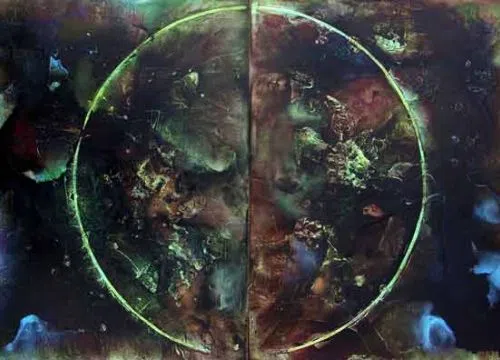
When Muse Meets Inspiration
By: Karen Cay
One never knows when, where or how artistic muse is going to strike. When it comes – for an artist of any genre – it is a most blessed event. When the muse turns its back on you – it is a trying time filled with self – examination, angst and a serious concern that the muse has been offended forever and will never, ever come back. That is rarely the case. Instead, sometimes muse’s – like their people – just need a little inspiration.
The paintings currently in the Mann Art Gallery’s show BORDERLANDS – IMAGINING THE IMMATERIAL, represent the best muse has to offer – enough so, to spark my own creativity, allowing me to write a column after several weeks of nothingness.
This is a show of large, lush paintings by once local artist Shawn Serfas, which embrace the core ideals of artistry – of merging imagination and perspective – with tools of the trade: paint, canvas, brushes.
“How do the material imagination and the immaterial relate? How and what do we think about material-based objects and observable life versus immaterial ideas, beliefs and non-physical phenomena? The material imagination refers to the way we imagine and think about material structures. What information do the natural and urban environments reveal about the immaterial structures within any given physical space? These are the questions being asked,” reflects Serfas in his artist’s statement.


